I didn’t like the memorial at Chelmno at first. It seemed forgotten, in disarray, and haphazardly thrown together. Put together by the Soviet Union in the 1960s, and having minimal funding today, it is not well maintained. This makes sense given the strained relations between Russia and Poland, and the obscurity of the site itself. However, the lack of attention given to the site seemed disrespectful to the victims in my eyes. Over 250,000 people died here, in a space that occupies an extremely small space when compared to Auschwitz-Birkenau, and the best the government and community could do was to put up an ugly memorial (I’m sorry but it’s true) and allow the rest of it to become overgrown.
But as I started to walk further and further into the site, it hit me. After hearing about the process of extermination at the first section of the camp, and knowing that thousands of victims were burned and destroyed in this small section of this middle-of-nowhere forest, I was unsure of exactly what to expect. The moment we stepped out into the clearing and saw the memorial, I understood why they commemorated the site the way they did. Even more so than Treblinka, this site is open and blank. All that remains are low foundation markers where burn pits and mass graves once were. Standing there, you’re left to attempt to imagine what it would have looked like, what it would have smelled like. The openness of such a space is an exponentially stronger force of emotional dictation than any sign or exhibit.
I always find sites like this, Treblinka, and even Birkenau, much more powerful than the manufactured found at Auschwitz I. Nature plays a powerful role in sites of commemoration. Plants begin to overtake stone foundations, weather and rain wear away at stone monuments, and the site itself is full of life with the wild creatures that call it home. One of the more impactful moments occurred when I felt compelled to snap a picture of a Poppy growing in the distance, right next to what once was a mass grave. When I lowered my camera, a friend leaned in and asked if I knew why that flower is interesting. She explained that the poppy flower is a symbol of death, sleep and remembrance. This lonely flower is suddenly able to add new levels of meaning and symbolism to my experience in Chelmno. Simple occurrences of nature such as this single Poppy have the opportunity to provoke emotions in visitors at random because they are not placed there with a purpose. They are not arranged by museum staff, nor donated by foundations or organizations. They are simply messages from nature that we are left free to interpret as we visit these sites and ponder the memory they attempt to preserve.
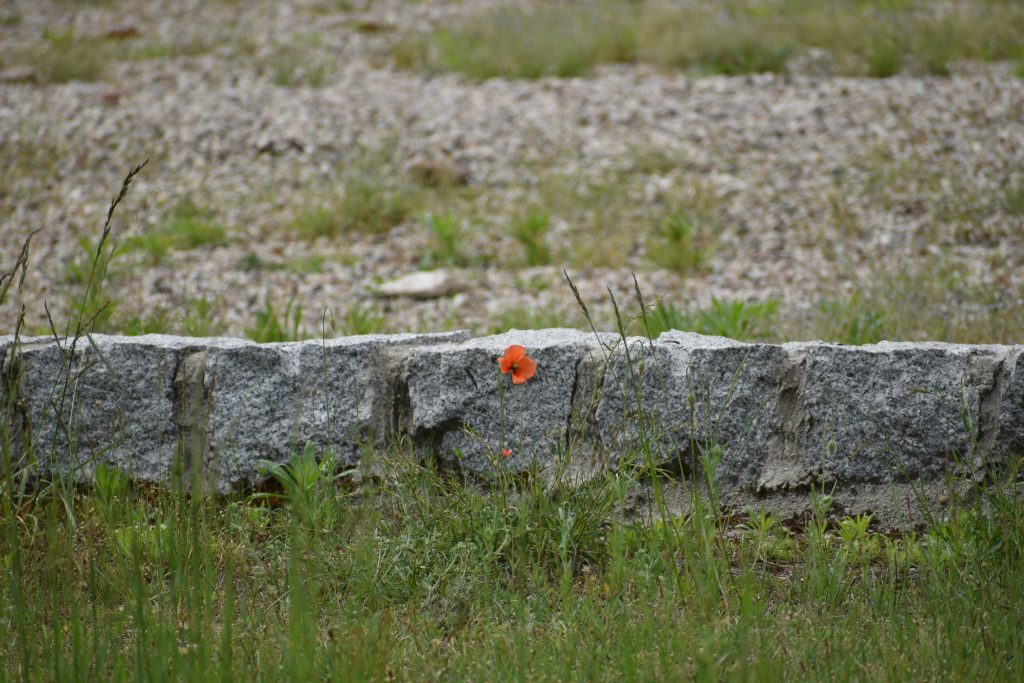

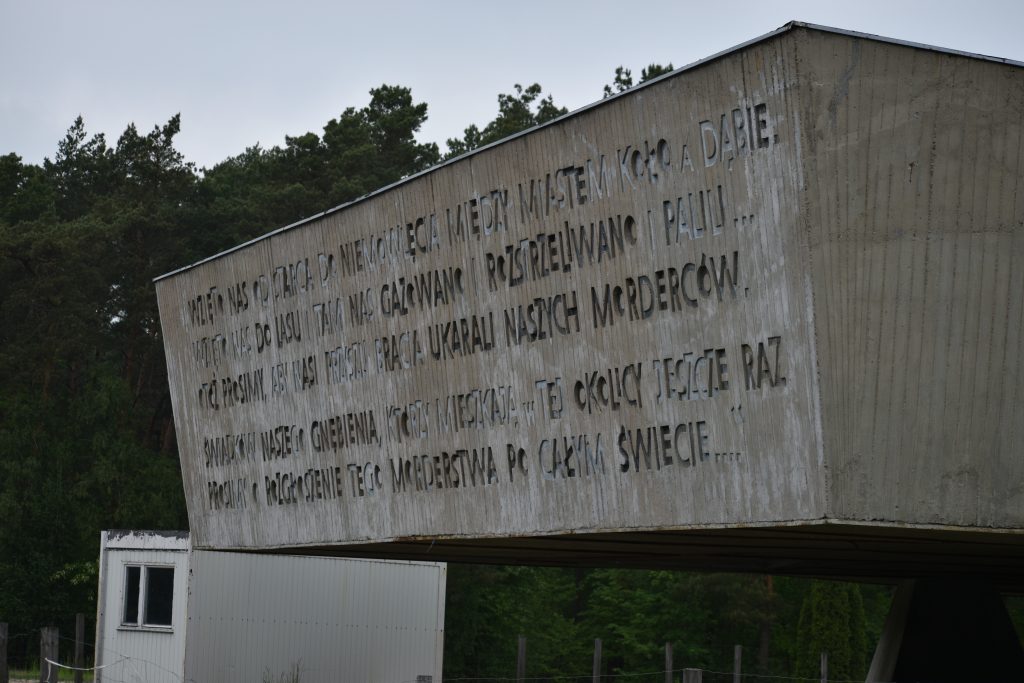
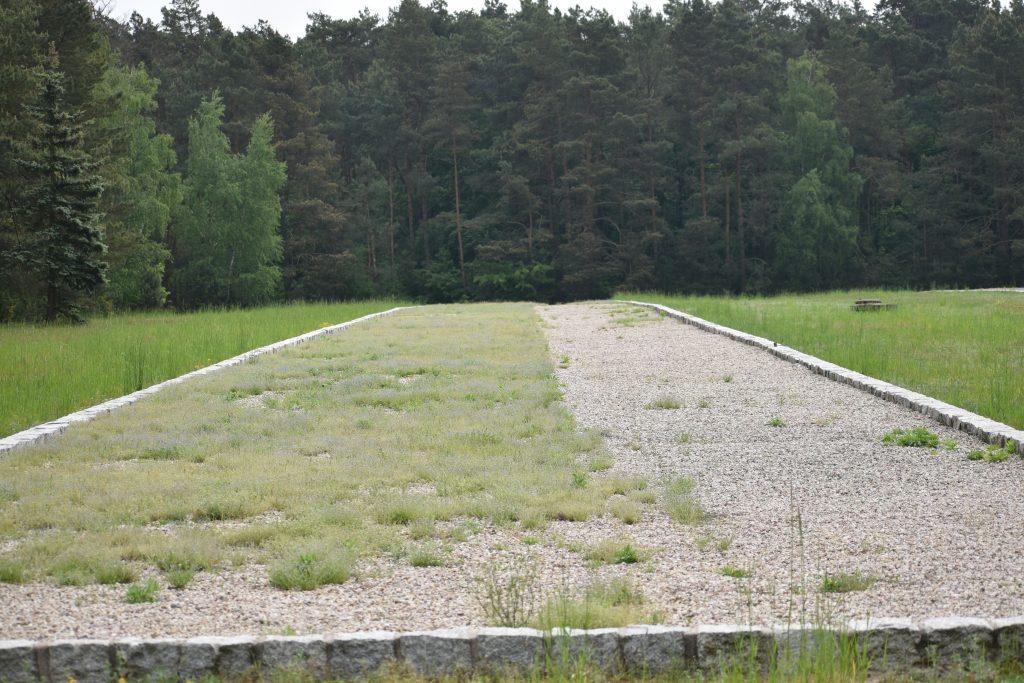
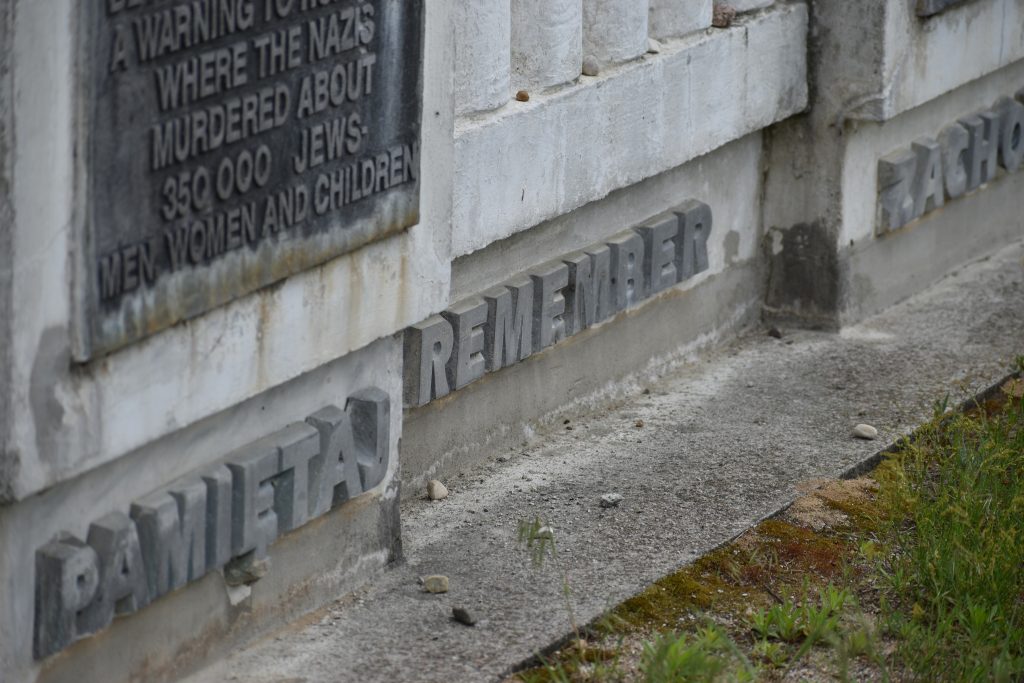
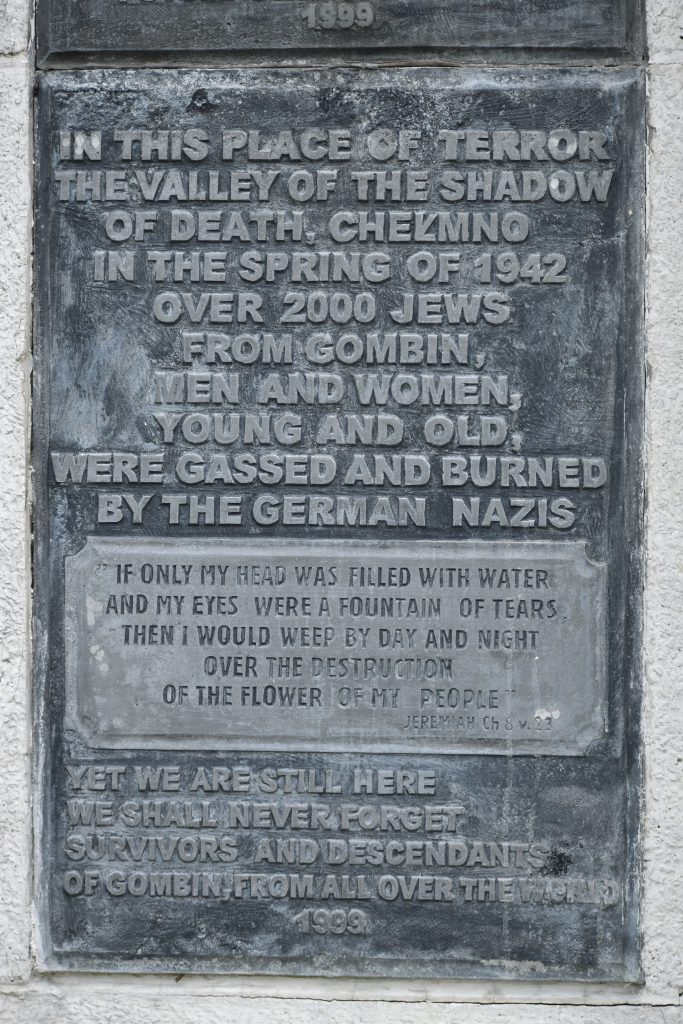
2 comments
I find it profoundly moving that you understand nature leaves us messages that we have free choice to interpret or not. The sparsity of poppies on this site interested me. They grow in abundance in other places, like those WWI battlefield sites in northern France. It somehow seems more poignant that they are fewer in number in such a place of desolation, but their orange presence every-so-often reminds us to stop and listen to the sounds of the earth.
Maybe the ‘ugly’ monument was intentional to reflect the ugliness of all the death. But, your explanation, observation and photo of the poppy certainly can be a reminder to never forget the beautiful people whose lives were extinguished in such a horrible way.